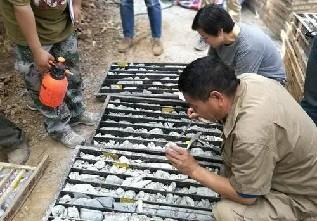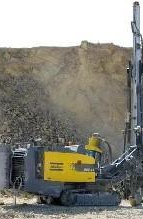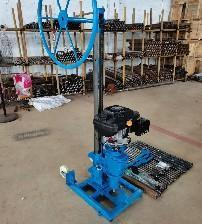What are the Commonly Used Mineral Deposit Sampling Methods?
Common Ore Deposit Sampling Methods
Grooving Method: This method involves digging a groove of a certain size on the ore body, and using all the dug-out ores from the groove as samples. The grooves should be arranged where the mineral composition changes the most. The cross-sections of the grooves are typically rectangular or triangular, with a depth generally ranging from 1-10cm and a width of 5-20cm.
Advantages: simple to operate, low cost, high sample representativeness.
Disadvantages: time-consuming and laborious for large-scale sampling, may cause damage to the orebody.
Comprehensive Delamination Method: In this method, a canvas or thin iron plate is placed on the bottom of the working surface, and a layer of the entire exposed ore body is peeled off and collected on the canvas as a sample. For fine-grained disseminated ores, the depth should be 10-25mm, while for coarse-grained disseminated ores, the depth should be 50-100mm.
Advantages: high sample representativeness, suitable for irregular orebodies.
Disadvantages: high labor intensity, difficult to control sampling depth, may cause damage to the orebody.
Grid Sampling Method: This method is used for large sampling areas. A rhombus, square, or rectangular grid is drawn on the sampling surface, and samples are taken at the intersections of the grids.
Advantages: high sample representativeness, suitable for irregular orebodies.
Disadvantages: high labor intensity, difficult to control sampling depth, may cause damage to the orebody.
Blasting Method: This method involves drilling holes through the two walls and the roof of the exploration tunnel, and then blasting according to predetermined specifications. All or part of the blasted ore is used as a sample. The depth is typically 0.5-1.0m, with a length and width of approximately 1m.
Advantages: high sampling efficiency, suitable for large-scale and complex orebodies.
Disadvantages: high cost, may cause damage to the surrounding environment.
Core Splitting Method: When drilling is the primary exploration method, experimental samples can be split from the drilling core. When splitting, a sample is taken by splitting 1/2 or 1/4 vertically along the center line of the core.
Advantages: high sample representativeness, no damage to the orebody.
Disadvantages: high cost, time-consuming and laborious.
The purpose of mineral deposit sampling is generally to evaluate the selectivity of ores or to provide a technical basis for the design of new mineral processing plants. These sampling methods are based on factors such as ore distribution, granularity, and the size of the sampling area.
In addition to the above methods, other sampling methods include:
Bulk sampling
Grab sampling
Auger sampling
Piston sampling
The specific sampling method should be selected based on the specific conditions of the ore deposit and the sampling objectives.
Whatsapp:+86 133 1927 7356
Email:[email protected]





